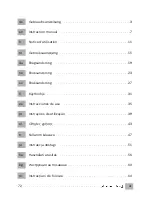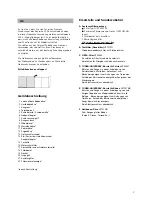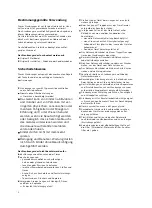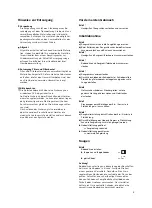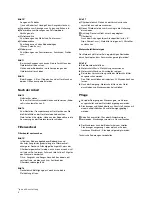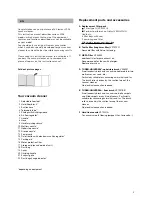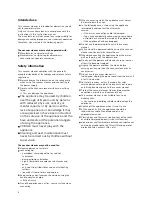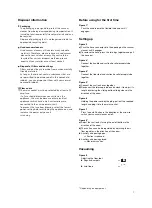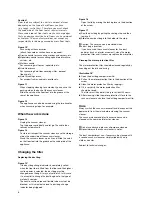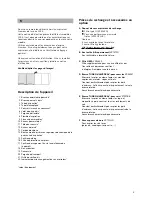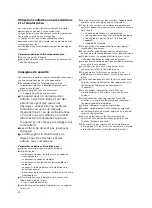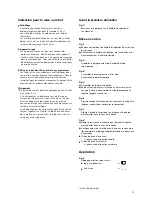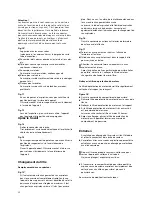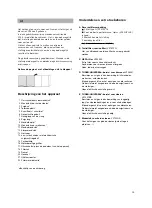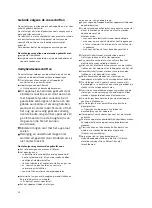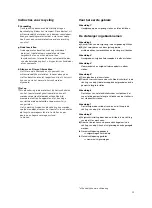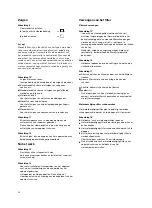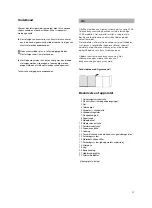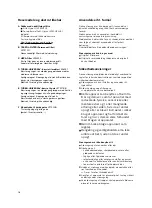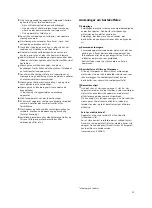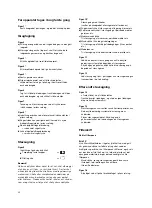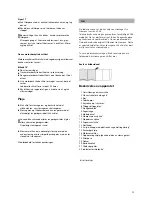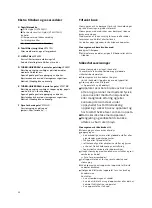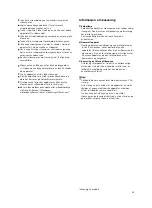
Caution!
Floor tools are subject to a certain amount of wear,
depending on the type of hard floors you have
(e.g. rough, rustic tiles). Therefore, you must check
the underside of the floor tool at regular intervals.
Worn undersides of floor tools may have sharp edges
that can damage sensitive hard floors, such as parquet
or linoleum. The manufacturer does not accept any
responsibility for damage caused by worn floor tools.
Figure 10*
Vacuuming with accessories
(attach to handle or suction hose as required).
a)
Crevice nozzle for vacuuming crevices and corners, etc..
b)
Upholstery nozzle for vacuuming upholstered furniture,
curtains, etc.
c)
Mattress nozzle
For vacuuming mattresses, upholstery, etc.
d)
Hard-floor brush
For vacuuming hard floor coverings (tiles, parquet
flooring, etc.)
e)
Hard furnishings brush
For window frames, cabinets, profiles etc.
Figure 11
When stopping cleaning for a moment, you can use the
parking aid on the back of the vacuum cleaner.
Slide the catch on the floor tool into the groove at the
rear of the appliance.
Figure 12
The appliance can also be carried using the two handles
when vacuuming steps, for example.
When the work is done
Figure 13
Unplug the vacuum cleaner.
Tug the power cord briefly and let go. The cable then
rewinds automatically.
Figure 14
To store or transport the vacuum cleaner, use the storage
aid on the underside of the vacuum cleaner.
Stand the vacuum cleaner up on its end. Slide the catch
on the floor tool into the groove on the underside of the
appliance.
Changing the filter
Replacing the dust bag
Figure 15*
If the dust bag change indicator is completely yellow
when the floor tool is lifted from the floor and the highest
suction power is selected, the dust bag must be
changed, even though it may not yet be full. In this case
it is essential to change the dust bag due to the type of
material it contains.
The nozzle, suction pipe and flexible tube must not be
blocked, as this would also lead to dust bag change
indicator being triggered.
Figure 16
Open the lid by moving the locking lever in the direction
of the arrow.
Figure 17
a)
Seal the dust bag by pulling the sealing strip and then
remove it.
b)
Slide the new dust bag into the holder to the stop.
!
Caution: The cover can only be closed when
a dust bag is inserted
.
If you have used the vacuum cleaner for fine dust
particles (such as plaster or cement), clean the motor
protection filter and, if necessary, replace the microfilter.
Cleaning the motor protection filter
The motor protection filter should be cleaned regularly by
knocking out the dirt and rinsing.
Illustration 18*
䡲
Open the dust bag compartment lid.
䡲
Pull out the motor protection filter in the direction of the
arrow.
䡲
Clean the motor protection filter by tapping it.
䡲
If it is very dirty, the motor protection filter
should be rinsed.
The filter must then be left to dry for at least 24 hours.
䡲
After cleaning, slide the motor protection filter into the
vacuum cleaner and close the dust bag compartment lid.
Care
Always switch the vacuum cleaner off and disconnect the
power cord from the mains before cleaning the vacuum
cleaner.
The vacuum cleaner and plastic accessories can be
cleaned with a commercial plastics cleaner.
!
Do not use abrasive, glass or all-purpose cleaners.
Never immerse the vacuum cleaner in water.
The dust compartment can, if necessary, be cleaned with
a second vacuum cleaner or simply wiped with a dry
cloth or a duster.
Subject to technical changes.
8
Summary of Contents for VS04 Series
Page 69: ...67 ...
Page 70: ...68 ...
Page 71: ...69 ...
Page 73: ...71 ...
Page 74: ...72 ...
Page 75: ...73 ...
Page 78: ...76 GR ...
Page 81: ...79 ...
Page 82: ...80 ...
Page 83: ......
Page 84: ...A D E B C F Typ G 6 7 8 22 20 21 19 1716 18 10 4 1 2 3 13 14 15 11 9 5 12 ...
Page 85: ...1 CLICK 3 a 6 5 a 5 b 8 a b 7 2 b a 9 4 ...
Page 86: ...14 12 11 13 16 15 10 d e b c 10 a ...
Page 87: ...a b 17 18 ...
Page 88: ...A GA 5100 003 037 A 11 11 ...


